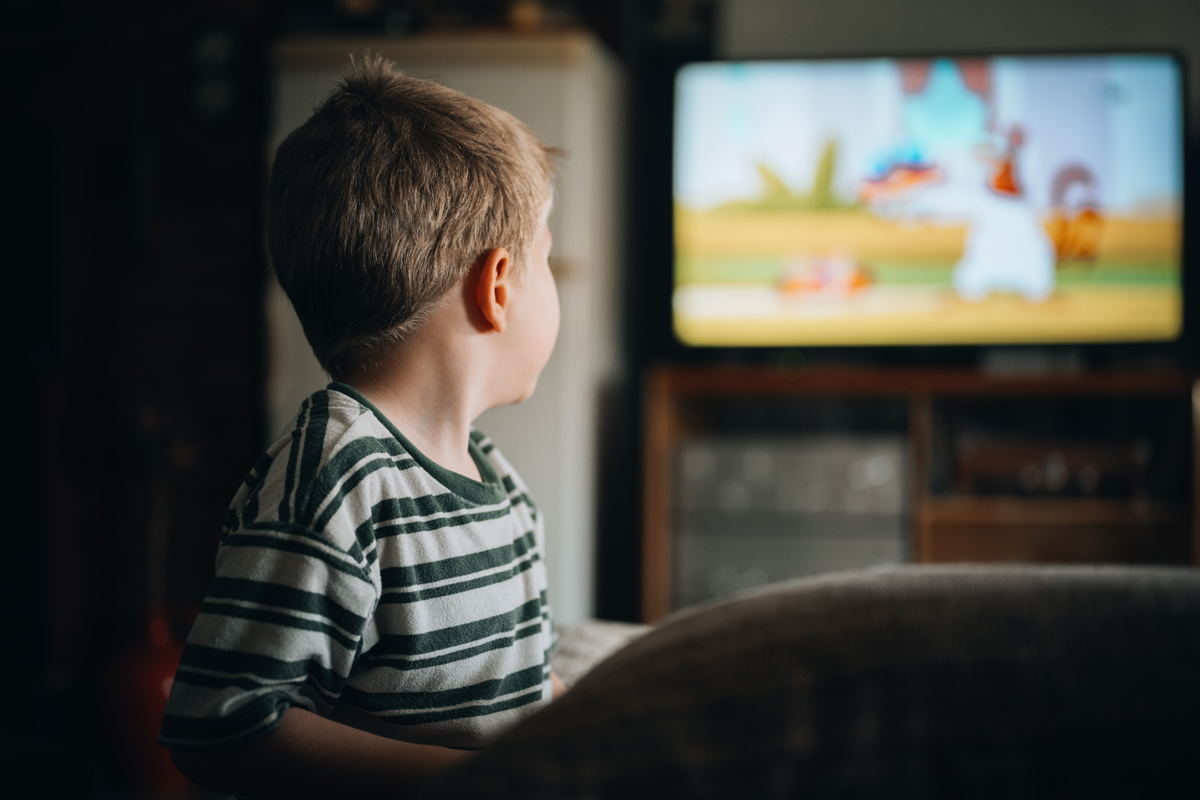 |
In those with European ancestry, computer use was a significant genetic marker for myopia, while watching TV and moderate physical activity helped lower their risk. Photo: Getty Images. Click image to enlarge. |
Don’t let your kids hear this: A new study found that watching TV has a protective effect against myopia development. Of course, this is merely in contrast to the alternative of computer use, given the shorter working distance in the latter. Still, the unusually worded conclusions might elicit smirks from children who’ve heard too often the admonishment to watch less TV.
Myopia is the most common eye disease worldwide, and its incidence is growing, particularly among young people, especially in East and Southeast Asian countries, although Europe and the United States are seeing increases annually. Many have investigated the impact of genetics and environment on myopia, and, lately, lifestyle choices have come under scrutiny, including screen time, physical activity and even sleep habits.
A recent study considered genome data from UK Biobank participants of European ancestry and analyzed sleep traits, physical activity and leisure-sedentary behaviors using Mendelian randomization (MR). Results showed that computer use is genetically predicted to increase myopia risk; however, leisure TV watching is a protective factor, potentially because of the larger-size screens having less impact on refractive change.
Those who performed moderate-to-vigorous physical activity weekly—measured based on the number of days participants engaged in 10 or more minutes of these activities—had a significantly reduced risk of myopia. Alternatively, no association was found between myopia and those whose activity was measured by a wrist-worn accelerometer device. The authors contended that cognitive biases and affective states may influence self-reported physical activity data.
No causality was found between myopia and sleep traits, either, including insomnia, sleep duration and chronotype. This is consistent with prior research, but the authors say additional studies are warranted.
“The MR study design is the primary strength of the present study,” the researchers wrote in their paper. “This design minimizes residual confounding variables and reverses causality inherent to observational studies. The instrument variables of leisure-sedentary behavior/physical activity/sleep traits included in this study had substantial sample sizes and had a robust association with focal exposure. Consequently, this mitigated the influence of weak instrument bias and increased the statistical power of the study.”
The homogeneity of participants—all of European descent—was noted as a limitation of the study, which prevents these findings from being directly applicable to other ethnic groups. Also, the authors point out the self-reported data on behavior, physical activity and sleep traits may be subject to information bias. “Furthermore, we could not execute sex- or age-specific analyses because we used summary statistics and individual raw measurements were not conducted,” stated the authors. “The myopia data used in this study do not have clearly stated myopia ranges, criteria, and measurements in databases at this stage, so specific analyses of the data in question could not be performed.”
They concluded, “Our results suggest that computer use is causally related to the increased myopia risk, whereas television viewing and moderate physical activity may be causally linked to the decreased myopia risk. Our study offers new insights into the potential mechanism for predicting myopia occurrence and progression.”
Zhang, XB., Jiang, HH., Zhang, LL. et al. Potential causal associations between leisure sedentary behaviors, physical activity, sleep traits, and myopia: a Mendelian randomization study. BMC Ophthalmol. March 5, 2024. [Epub ahead of print.] |


